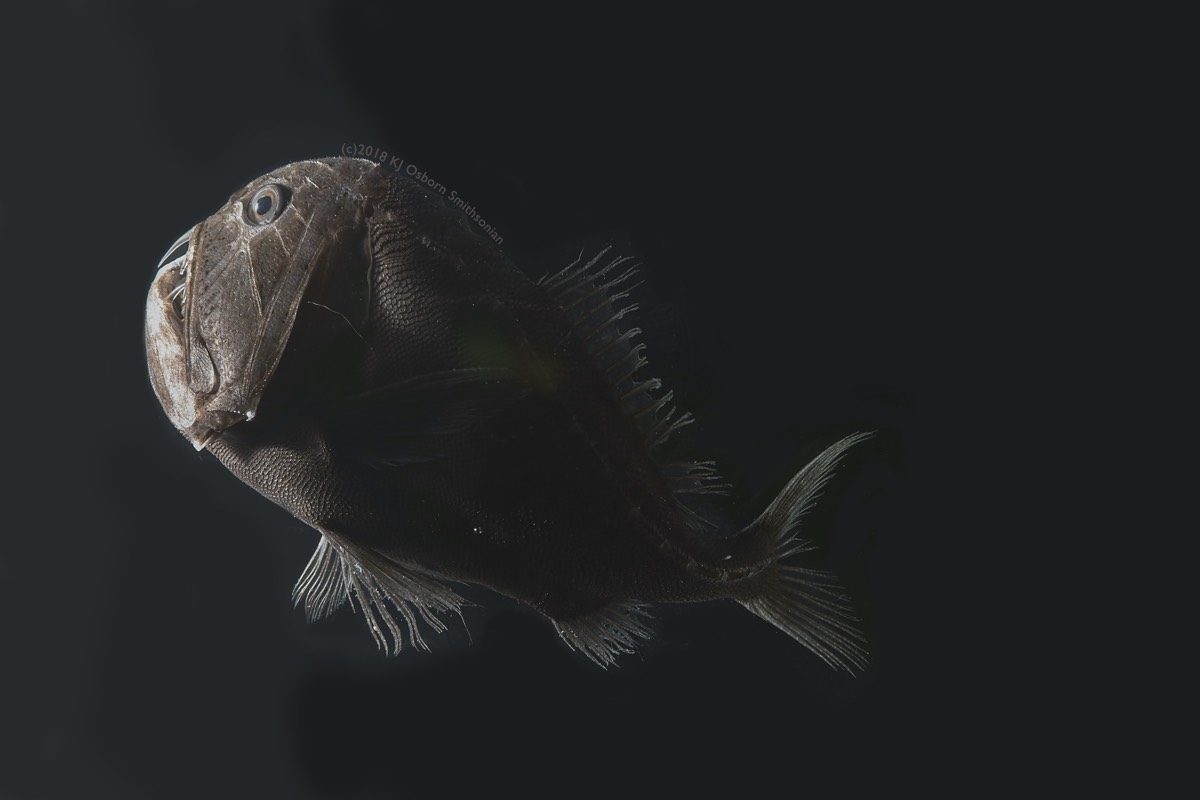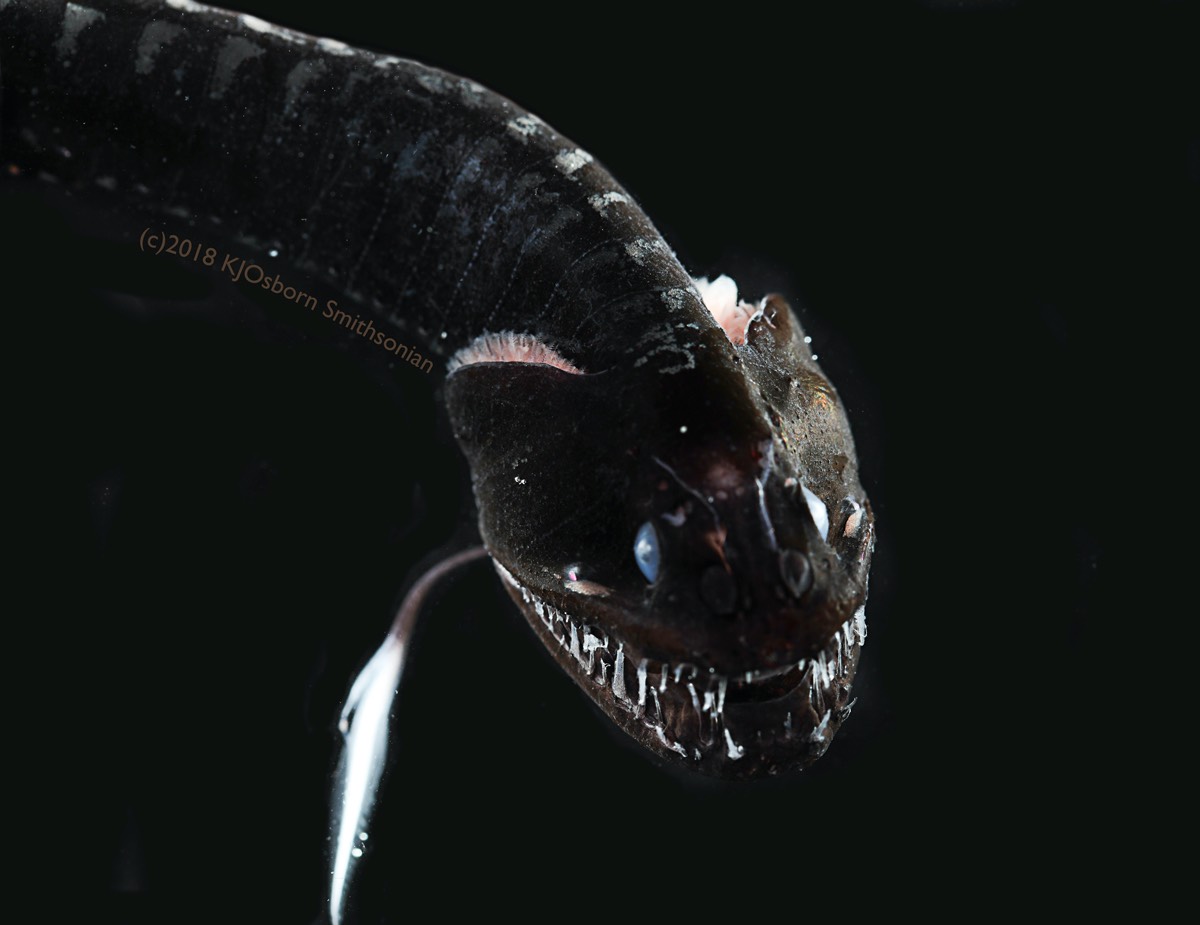
We called the ocean black because the fish lives at great depths, where the sun's rays practically do not penetrate. Eternal night reigns there. And the fish is really black - the surface of the body absorbs 99.5% of the light.
In the photo, the fish does not seem so black because the camera flashes are very bright. Even 0.5% of the reflected light was enough to see the fish in all its glory.
Nature does nothing for nothing. Some creatures living at the bottom of the ocean luminesce, attracting victims that float into the light. This is a smart way to survive. Black fish use their colors to hide from predators. This is an alternative way to survive.

Source It took a long time to
photographAnoplogaster cornuta, this is the scientific name of the species. The researchers used a Canon Mark II DSLR camera with a 65mm macro lens and four flashes at once. Scientists spent a lot of time until they got a successful photo. Next, the picture was corrected in a graphics editor, making it more contrasting.

According to the author of the picture, it is very difficult to get a sufficiently high-quality photograph of an object at great depths, let alone a completely black fish.
“Over the years, I have deleted thousands of unsuccessful images of other fish of this species, as there were no details in the photo. No matter how you set up the camera, the bodies of the fish absorbed all the light. It's a shame I don't have any pictures left to illustrate my words, ”said Karen Osborne of the National Museum of Natural History in Washington.
For a couple of years, Osborne did not understand why the fish could not be photographed normally. In order to understand the problem, she invited a biologist from Duke University. He found the reason: the skin of the fish absorbs 99.5% of visible light. Being in the depths of the ocean, the fish found an excellent way to hide from those who want to dine on it: the luminescent light of its predatory neighbors does not reflect from the body.
 As it turned out, there is another species in the ocean that differs from all others in blackness - Idiacanthus antrostomus . But this is already a predator.
As it turned out, there is another species in the ocean that differs from all others in blackness - Idiacanthus antrostomus . But this is already a predator.
Then scientists discovered that the skin of another species, Idiacanthus antrostomus , has similar properties. It is a predatory fish that lures victims with the help of a luminescent appendage. The "hunter" himself is not visible - he is hidden in the dark, his body does not reflect anything.
What allows fish to hide? It's about melanin, a very common and well-known pigment. In the skin of deep-sea fish of the mentioned species, it is in the form of granules - melanosomes, which, in turn, are enclosed in cells - melanophores. They are placed in a continuous layer in the deep layer of the skin, the dermis. The pigment is very effective at absorbing light falling on the beads.

According to scientists, the size and shape of the granules is of great importance. If their characteristics were even slightly different, the fish would not absorb light so effectively. Fish skin is as good in this respect as VantaBlack, the blackest substance ever created by man. But the structure of VantaBlack is extremely complex - there are carbon nanotubes, a special structure, and specific properties of the material itself. Here, nature used what everyone knows - melanin, and did it extremely effectively.
DOI: Current Biology, 2020.10.1016 / j.cub.2020.06.044 ( About DOIs ).